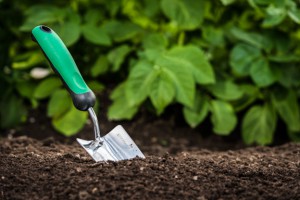 We know you’re planning your spring garden. Farmer’s Coop has everything you need to get your garden on this spring. Visit us for seed potatoes, onion sets, and plants, organic garden seed, organic plants, organic fertilizer, bedding plants, … all your gardening needs.
We know you’re planning your spring garden. Farmer’s Coop has everything you need to get your garden on this spring. Visit us for seed potatoes, onion sets, and plants, organic garden seed, organic plants, organic fertilizer, bedding plants, … all your gardening needs.
Best Bets For Cool Weather Planting
As everyone knows, our late winter/early spring weather can be a gamble– temps can be spring-like one day and fall below freezing the next. But, the weather extremes should not deter gardeners from planting this time of year. Potatoes are top of the list for planting this time of year. Because potatoes are a cool season crop, they can be among the first crops you set in the ground each spring.
Other good go-to cold weather vegetables are root produce such as turnips, beets, and carrots as well as hardy leafy greens like spinach, cabbage, kale, and chard. Bulb veggies (onions and garlic), as well as asparagus crowns, can also be planted at this time.
Preparing and Planting Potatoes
When purchasing seed potatoes, look for certified seed potatoes. These are seeding potatoes which have not been treated with growth retardants to prevent sprouting. Conventional potatoes in grocery markets are typically treated with retardants.
After you have planned and prepared a garden spot with well-drained, loose soil, the seed potatoes can be prepped for planting:
Cut each seed potato into quarters (sulfur dust can be applied to the fresh cut ends) and let the potato quarters set out overnight or longer until cut sides callus over. Seed potato quarters are then ready to plant— for a good rule of thumb, potato quarters should be planted 3” to 4” deep and spaced 12” to 15” apart. To provide plants plenty of growing room, make sure rows are spaced 24” to 36” apart.
Caring for Potato Plants
Potatoes need consistent moisture, so water regularly when tubers start to form. Before the potato plants bloom, hilling should be done when the plant is about 6 inches tall. Hoe the dirt up around the base of the plant in order to cover the root as well as to support the plant. Bury the plant base in loose soil. Hilling will keep the potato plants from getting sunburned, in which case they turn green and will taste bitter. You will need to hill potatoes every couple of weeks to protect your crop.
When the potato plants have bloomed, new potatoes are ready for harvest. For larger potatoes, harvest only after plant tops have fallen over.
Other Cool Weather Vegetable Plantings
Lettuce, spinach, broccoli, and cabbage are among the Cole Crops planted this time either by seeds or plant starts. Stop by your local Farmer’s Coop for for seed potatoes, onion sets and plants, organic garden seed, organic plants, organic fertilizer, bedding plants, … all your gardening needs. Keep an eye on Facebook and we’ll let you know when new plants arrive.


